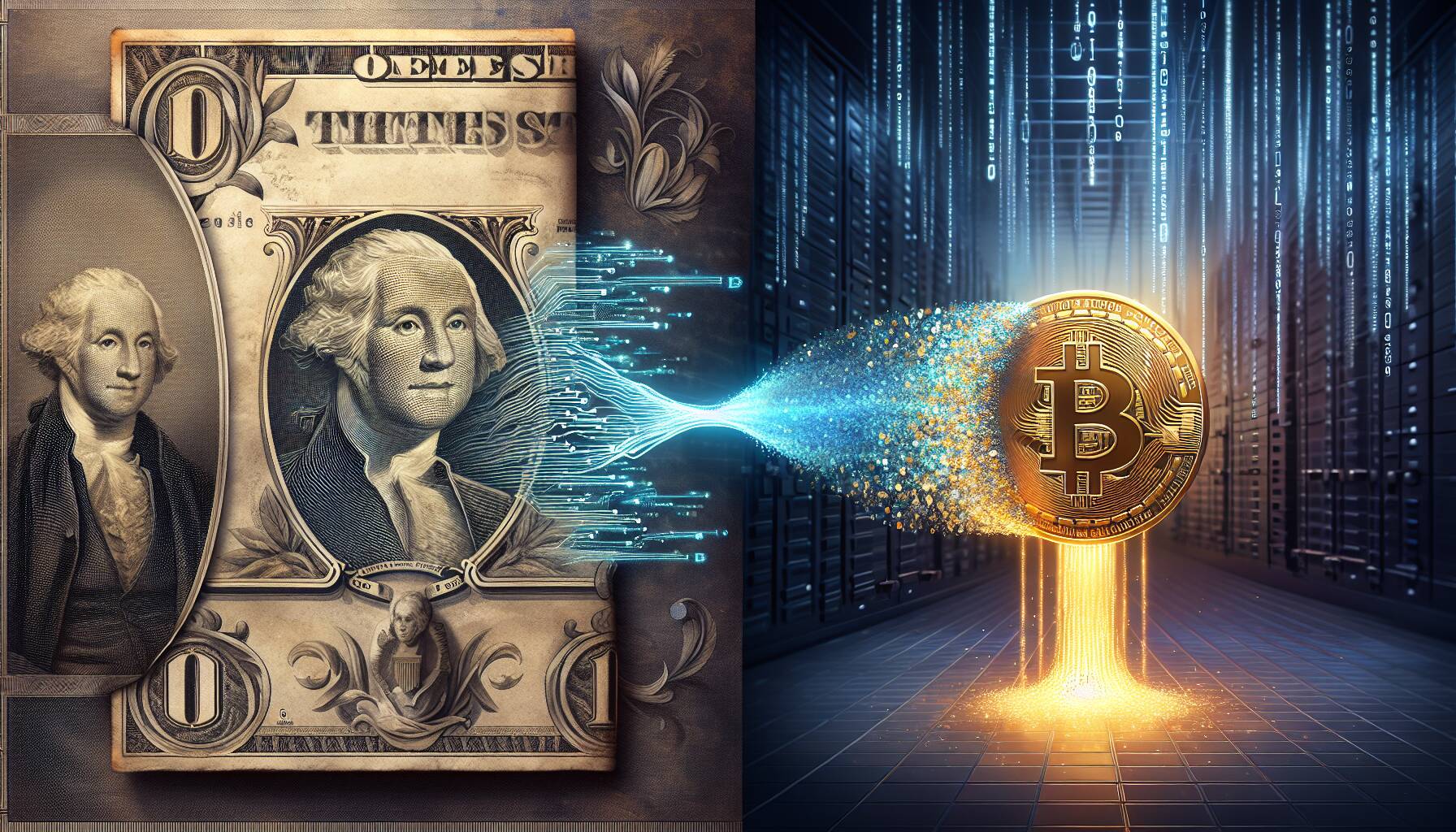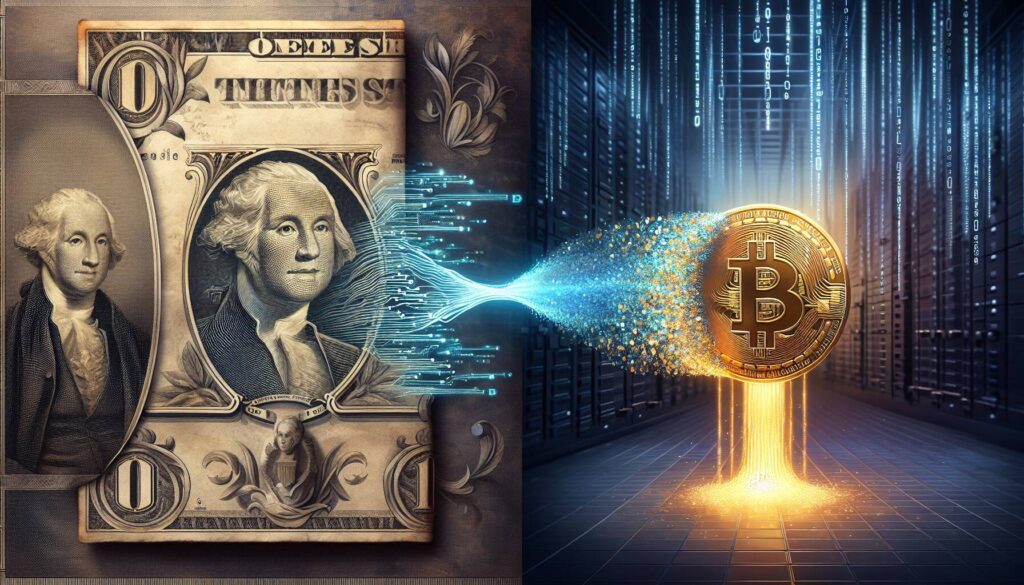As the world of finance shifts toward digital realms, the role of the U.S. dollar is undergoing a remarkable transformation. Much like a three-act play, the dollar’s journey has evolved through distinct phases, each reshaping its significance in global economics. The first act was characterized by the emergence of Eurodollars in the 1950s, allowing various entities—including those in the Soviet bloc and multinational corporations—to hold dollars beyond U.S. regulations. This development laid the groundwork for a vast shadow banking system. The second act, initiated by the Petrodollar in the 1970s, linked global energy trade directly to the dollar, solidifying its dominance and giving the U.S. government a reliable market for Treasury bills.
The unfolding third act introduces a new player into the narrative: USD-backed stablecoins, also referred to as Stabledollars. These on-chain tokens, fully backed by U.S. Treasury bills and cash, have surged past $230 billion in circulation, occasionally processing more transactions than traditional payment giants like PayPal and Western Union. This innovative financial instrument represents a digital transformation of the dollar, functioning as a ‘monetary API’ that facilitates instant transactions at minimal costs.
“Stablecoins haven’t replaced the banking system; they have tunneled around its slowest, most expensive choke points.”
This rapid evolution allows diverse users, from a merchant in Lagos accepting USDC payments to a hedge fund in Singapore managing cash efficiently, to leverage stablecoins for seamless transactions. However, as the industry gains traction, it also invites challenging questions regarding governance and control. Who oversees monetary policy when transactions occur predominantly within smart contracts? Furthermore, as the U.S. Senate considers legislative frameworks like the GENIUS Act designed to regulate stablecoin issuers, analysts predict a potential $2 trillion circulation of stablecoins by 2028—triple that of early 1990s Eurodollars.
It’s clear that the U.S. dollar is once again redefining its place in the world economy through stablecoins. They are not a replacement for traditional banking, but rather an innovative method that enhances efficiency and accessibility. While this evolution signals exciting promises for the future, it also emphasizes the necessity for responsible regulation to ensure stability and security in an ever-changing financial landscape.

Eight Decades of Dollar History: The Rise of Stablecoins
The evolution of the dollar over the past eighty years has taken place in three distinct acts, culminating in the rise of stablecoins. Below are the key points that illustrate this transformation and its potential impact on readers’ lives.
- Act I: The Eurodollar
- Originated in the 1950s in London to help international groups hold dollars outside U.S. regulations.
- Led to the growth of a multi-trillion-dollar shadow banking system.
- Act II: The Petrodollar
- Post-1974, OPEC priced crude oil in dollars, creating a strong global demand for U.S. currency.
- Provided a constant market for U.S. Treasury bills, solidifying the dollar’s status.
- Act III: The Rise of Stablecoins
- Stablecoins, particularly USD-backed Stabledollars, have surged to over $230 billion in supply.
- They act as programmable units of currency, offering instant settlement and low transaction fees.
- Impact on Global Transactions
- Efficient transactions for international merchants, bypassing traditional bank fees and delays.
- Facilitates quick currency conversion for gig workers and individuals, enhancing financial inclusion.
- Legislative Developments
- The GENIUS Act aims to regulate stablecoin issuers and open pathways to Federal Reserve accounts.
- Projected to lead to a $2 trillion stable-coin market by 2028, rivaling the historical Eurodollar stock.
- Potential Risks and Governance Issues
- Questions arise about monetary policy oversight when significant portions of currency exist in smart contracts.
- Concerns about the implications for users in authoritarian regimes, such as asset blacklisting.
- Future Outlook
- Stablecoins may become integrated into everyday transactions globally, often unnoticed by consumers.
- The U.S. must recognize stablecoins as critical financial infrastructure to maintain its dollar hegemony.
“Stablecoins are already the fastest-growing quasi-sovereign asset class. Harness them with serious rules and the dollar’s third great reinvention writes itself.”
The Evolution of the Dollar: A Comparative Analysis of Stabledollars and Currency Trends
The dollar’s history has long been characterized by its shifts and transformations, from the Eurodollar era to the Petrodollar, and now into the realm of Stabledollars. This latest chapter in the currency saga highlights significant innovations and competitive advantages that could redefine the financial landscape. Just as the Eurodollars allowed for the circumvention of regulatory controls, the rise of Stabledollars offers a new frontier that reangles the efficiency of transactions in our increasingly digital economy.
Competitive Advantages: The transition to Stabledollars emerges as a substantial opportunity for those looking to leverage cutting-edge digital finance. For instance, entrepreneurs and small business owners in developing economies stand to gain immensely from the reduction of transaction costs and expedited settlement times. A merchant in Lagos can now avoid costly currency slippage and replenishment delays, while a Colombian gig worker can sidestep cumbersome bank processes. Furthermore, the ability for institutions to park cash with higher yields through tokenized T-bills presents a compelling case for hedge funds and asset managers who are keen on maximizing returns without traditional banking delays.
Moreover, the U.S. dollar’s transition into a programmable financial instrument opens avenues for innovation that the old banking systems cannot match. Speed and programmability make it attractive for an array of users—from large corporations to individual consumers. The USD’s capacity to execute transactions seamlessly on smart contracts may drive wider adoption and ultimately affect the dominance of traditional rivals, such as the Euro and the Chinese Yuan.
Potential Disadvantages: However, this rapid evolution is not without its challenges. The pertinent question around governance and regulatory scrutiny looms large. The very essence of Stabledollars—allowing virtual tokens to facilitate transactions—introduces complexities in monetary policy management, especially in international contexts where different nations might resist a heavy reliance on U.S. assets. The governance risks cannot be understated: without robust frameworks to manage how these digital currencies fit into the financial ecosystem, shadow markets could thrive unregulated, placing both users and issuers in precarious positions.
This aspect could hinder the acceptance of Stabledollars among more cautious market players and governments wary of U.S. influence. European and BRICS nations might find themselves at a crossroad, weighing the benefits of adoption against potential over-dependence on a singular financial system.
Beneficiaries and Challenges: The primary beneficiaries of this evolution seem to be tech-savvy young entrepreneurs, fintech companies, and multi-national corporations poised to take advantage of the new framework Stabledollars provide. However, traditional banks and financial institutions may face existential threats if they cannot adapt quickly enough. They could find themselves at risk of obsolescence, forced to innovate or risk losing their client bases to faster, cheaper alternatives provided by stablecoin technologies.
In summary, the growing influence of Stabledollars signifies a shift that could benefit those willing to embrace the innovation while posing challenges to existing financial structures. As policymakers deliberate on regulations and frameworks, the future of currency looks set to evolve, transforming how we perceive and utilize money in daily life.

















